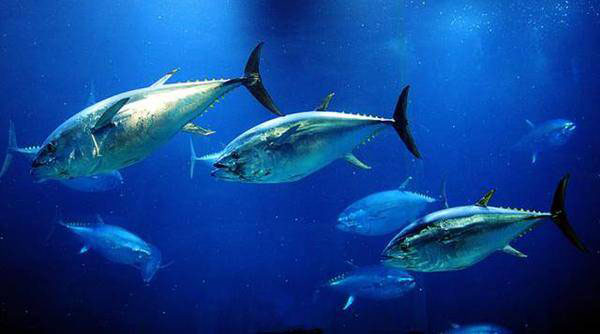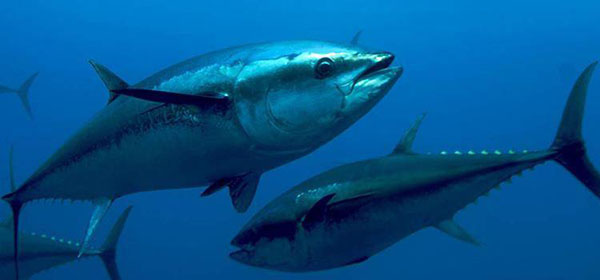Tuna (formerly translated as Asian winter fish in Portuguese in Macau) swims fast, with an instantaneous speed of up to 160 kilometers per hour and an average speed of about 60-80 kilometers per hour. The flesh of tuna is red, which is due to the large amount of myoglobin contained in the muscles of tuna.

There are more than 50 varieties of tuna, most of which are huge in size. Tuna has a strong reproductive capacity. A 50-kilogram female fish can lay as many as 5 million eggs per year.
Tuna is also a popular seafood ingredient, but due to its high economic value, it has been overfished by fishermen, which has threatened the size of its population, the most obvious being bluefin tuna.
Tuna is a healthy food with many ways to eat it. Japanese people like to cut tuna into sashimi or sushi, while Europeans and Americans crush tuna into cans, which can be used to make sandwiches and other foods. Taiwanese people are good at making dishes with various parts of tuna. "Turo" is the belly of tuna, which is considered to be the fattest part of tuna, and is generally only used to cut into sashimi.
Tuna is a very interesting fish. It swims fast, travels thousands of kilometers, and can travel across the ocean. There is a kind of tuna that can swim from the coast of California in the United States to the coast of Japan, a total distance of 8,500 kilometers, an average of 26 kilometers per day; another kind of tuna took only 119 days to cross the 7,770-kilometer-wide Atlantic Ocean, and swam more than 65 kilometers every day; there is also a kind of tuna that can cross the Indian Ocean from the Australian Gulf and finally reach the other side of the Atlantic Ocean. Its endurance for long-distance migration is really admirable. Therefore, tuna is worthy of being a swimming expert among fish. Tuna travels all over the world's oceans and has no fixed habitat, so some people call it "fish without borders", which makes sense.

In the ocean, in order to adapt to the environment, the color of the tuna's abdomen and back are different. This is a way for tuna to protect themselves. The color of the tuna's abdomen is lighter than that of its back. In this way, when you look up at it from the sea, its shallow body color is similar to the color of the sea surface; when you look down from the sky, it is similar to the color of the deep sea water. In this way, tuna can avoid natural enemies in the air and the sea by the difference in upper and lower body colors, and can also cleverly confuse other creatures and hunt. The main food of tuna is various fish and crustaceans, because tuna is a carnivorous marine fish.
The meat of tuna is like beef and is purple-red. It has a high hemoglobin content, low fat and high-strength protein, so it has high nutritional value.
Since tuna must always swim fast to maintain the body's supply, and only move in the deep sea, its meat is tender and delicious, and is not polluted by the environment. It is a rare healthy delicacy for modern people. The protein content is as high as 20%, but the fat content is very low. It is commonly known as sea chicken and has high nutritional value. Most of the fatty acids in fish meat are unsaturated fatty acids, and the amino acids are complete, including all 8 amino acids required by the human body. It also contains vitamins, rich iron, potassium, calcium, iodine and other minerals and trace elements. The content of unsaturated fatty acids DHA docosahexaenoic acid and EPA eicosapentaenoic acid in tuna ranks first among all foods. DHA is called brain gold and is an essential nutrient for the development of the human brain and central nervous system. EPA, also known as OMEGA3, is a nutrient unique to tuna. It can inhibit the increase of cholesterol and prevent arteriosclerosis, and has a special effect on the prevention and treatment of cardiovascular and cerebrovascular diseases.
Tuna also has some habits, that is, it does not like strong light, so it is not easy to use spotlights to trap it at night. In addition, although tuna's sense of smell is not sensitive, its eyesight is quite good. If you throw some small fish into the sea, it will quickly find and rush to prey. According to these living habits of tuna, people have created three main methods of catching tuna: pole fishing, net fishing and longline fishing.